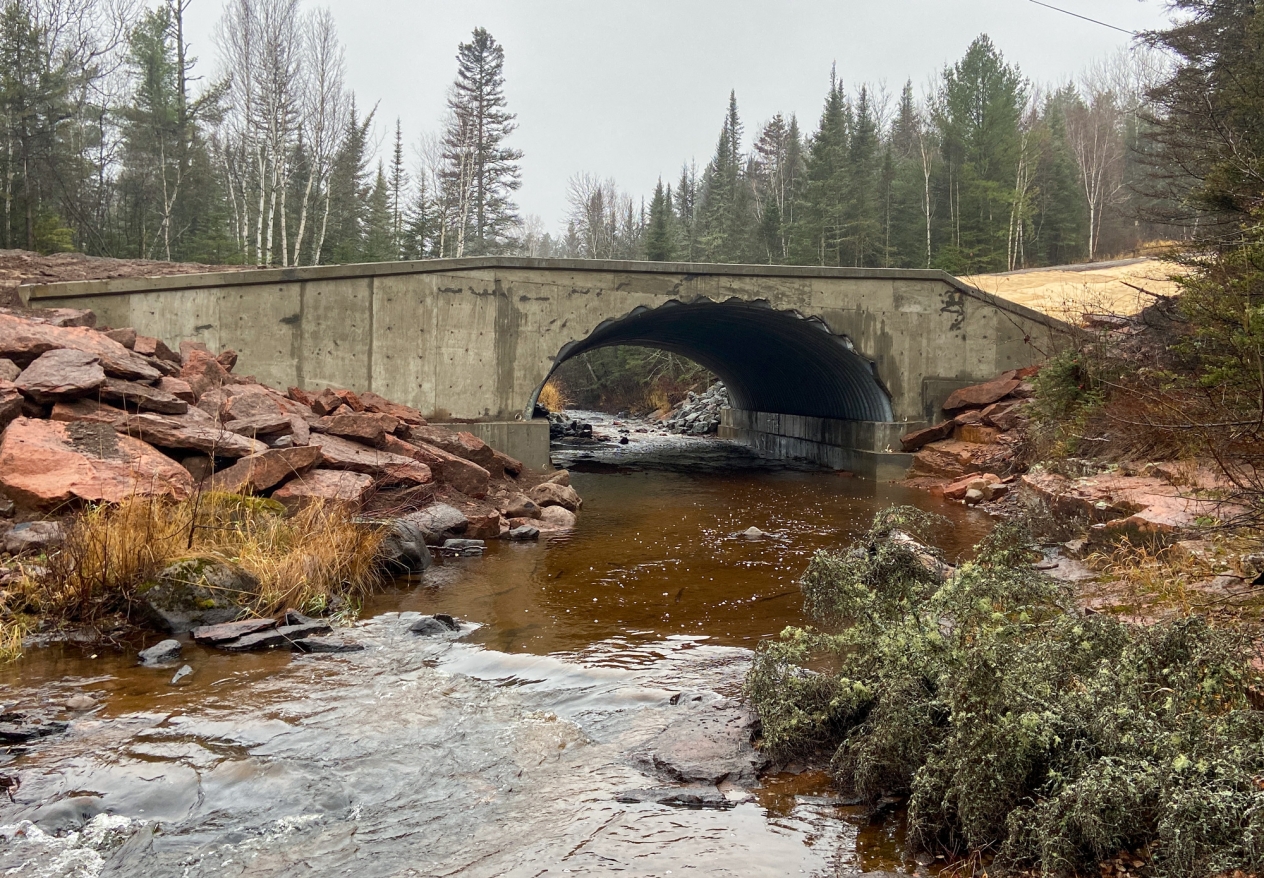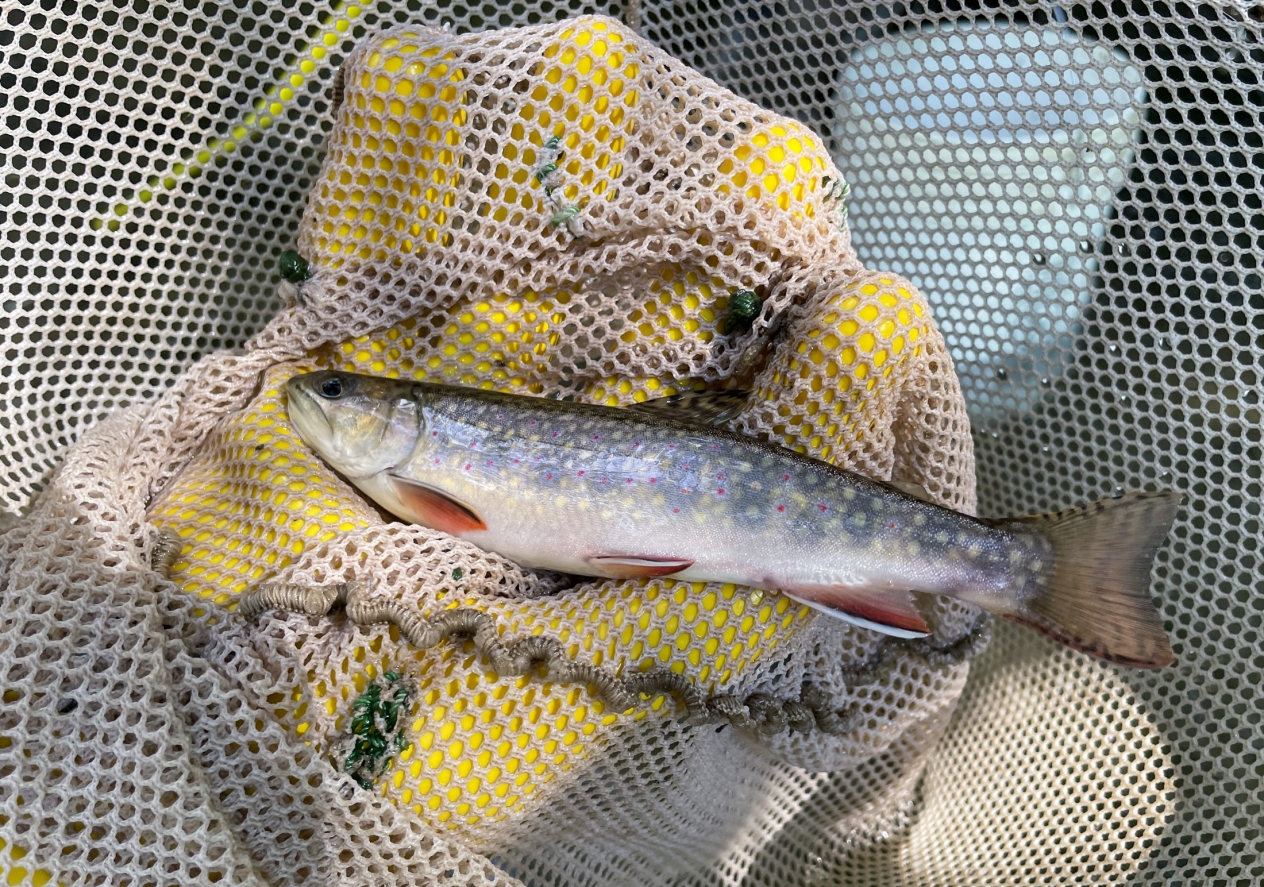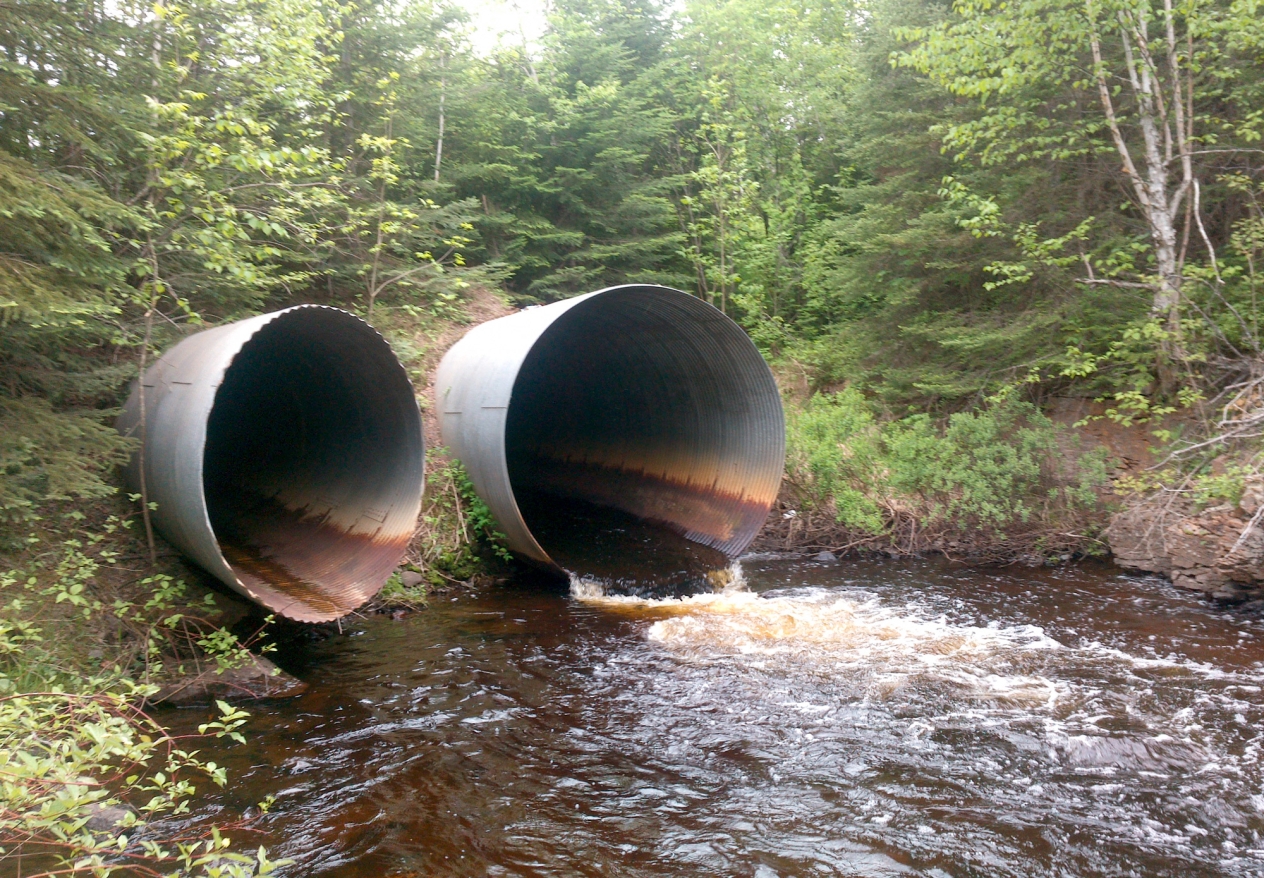
The culverts open pathways to cooler waters and prevent flood damage
Brook trout swimming in streams along Lake Superior's North Shore face many challenges, from loss of habitat to rising temperatures. But life got a little easier for some of them recently with the construction of new culverts, a months-long project that provides climate resiliency for local roads and gives fish vital access to coldwater refuge.
Lake County is home to hundreds of miles of critical stream habitat for fish that require cold, clean water for survival. Brook trout, the only stream-dwelling trout species native to the region, have navigated North Shore streams for thousands of years and are considered a keystone species, which means what affects the trout will affect entire ecosystems.
Fish swim up creeks when they can, instinctively following the flow of water and seeking cold water. Scientists often will see fish stacked below a dam or other barrier, trying to reach good habitats.
“We’ve documented that fish will move often through the season, and that sometimes they’ll move great distances,” says Dean Paron, statewide stream habitat supervisor for the Minnesota Department of Natural Resources.

Brook trout move around so much because they have a low thermal tolerance and need access to cold water year-round. However, climate predictions forecast higher temperatures in North Shore streams.
“Stream temperatures are going to warm to a point that they’re inhospitable for brook trout,” says Jeff Jasperson, an environmental specialist with the MPCA. “But we also know that there are areas where fish can find cold water. The smaller streams and tributaries are not as susceptible to warming. By connecting them, we are protecting them from the predicted stream-temperature rises.”
From 2020-2024, MPCA staff working in northeastern Minnesota watersheds partnered with state, federal, and local governments to replace stream crossings that were identified as critical barriers to fish passage. Each of the projects was prioritized based on years of monitoring work.
The chosen sites include four crossings over Hockamin Creek, two on Lindstrom Creek, and one on Cranberry Creek, all tributaries to the Baptism River, which empties into Lake Superior. Together, they reconnected 38 miles of habitat.
“Critical habitats for spawning, rearing, feeding, and finding refuge can be isolated by improper culverts and dams and subsequently become arranged in a patchwork pattern within a watershed,” Jasperson says.
The term “stream connectivity” refers to the ability of fish and other aquatic organisms to move freely within river systems to ensure all critical habitat components of a species are met. Since the new culverts were installed, scientists have documented fish traveling more than a mile along these streams.
“A lot of this focus has been on preserving streams, or reconnecting streams, we believe are going to be the most resilient, long-term, to climate change,” Paron says. “Prior to these culverts being removed, a lot of this movement was not possible, so we’re extremely pleased to see that by removing these fish barriers, fish are able to access coldwater habitat that they didn’t have before.”

Many old culverts — round, corrugated pipes several feet across — are undersized because the hydrology of the region is changing. Rainfall is growing heavier and more frequent. Properly sized culverts, built like bridges that span 10 feet or more, make the streams more resilient and the roads that cross them less prone to washouts.
When erosion leaves a culvert perched above the water level, that’s usually a good indicator it should be replaced, but Tara Solem, a district manager and water planner for the Lake County Soil and Water Conservation District, says DNR fish surveys, stressor identification reports, and priority areas within the Lake Superior North One Watershed One Plan also help prioritize culverts for replacement. The district employs regional engineers, the Technical Service Area staff, which reduces the cost of engineering, design, and project oversight. Climate change is considered for all projects at the Lake County SWCD, Solem says.
“Our regional engineers are knowledgeable and experienced, and they gather the necessary information, such as geotechnical surveys and soil borings, to put a good project design together,” she says. “All our projects are collaborative, with input from DNR fisheries, MPCA stressor ID staff, the applicable road authority, and our TSA engineers.”
The new culverts cost hundreds of thousands of dollars, and much of the funding for them is linked to habitat and fish passage. These investments in small communities create benefits for decades by preventing storm-related damages.
“These culverts are built to withstand a 100-year flood event or more,” Jasperson says. “The previous weren’t even capable of handling a one-and-a-half-year, bank-full event.”
The new culverts also lead to a decrease in erosion, which improves water quality in those streams and, as a result, biological health.
Ultimately, connecting the streams and rivers of Minnesota as they pass through culverts under many thousands of roads, trails, and driveways throughout the state benefits both people and fish.
“Fish know how to survive,” Jasperson says. “We are helping them by connecting these areas they’ve always relied on for survival.”
Project partners
These projects were a collaboration among many agencies and partners, including
- MPCA
- Lake County Soil and Water Conservation District
- DNR Forestry
- DNR Parks and Trails
- Cook County Soil and Water Conservation District
- Trout Unlimited
- Crystal Bay Township
- Technical Service Area 3
- U.S. Fish and Wildlife Service
- Lake County Highway Department
Funding was provided by
- the Clean Water, Land and Legacy Amendment
- Sustain Our Great Lakes
- Lessard-Sams Outdoor Heritage Council
- U.S. Environmental Protection Agency Region 5
- USFWS National Fish Passage Program
- U.S. EPA Great Lakes National Program Office
